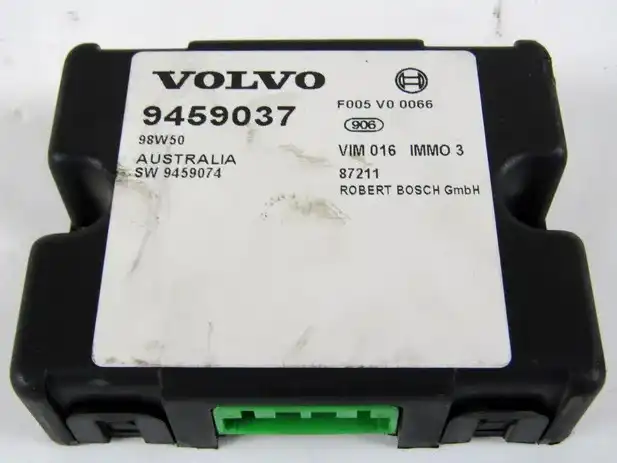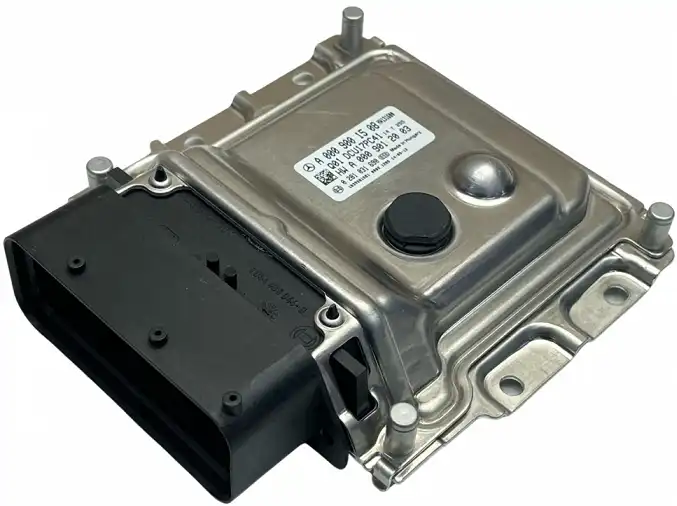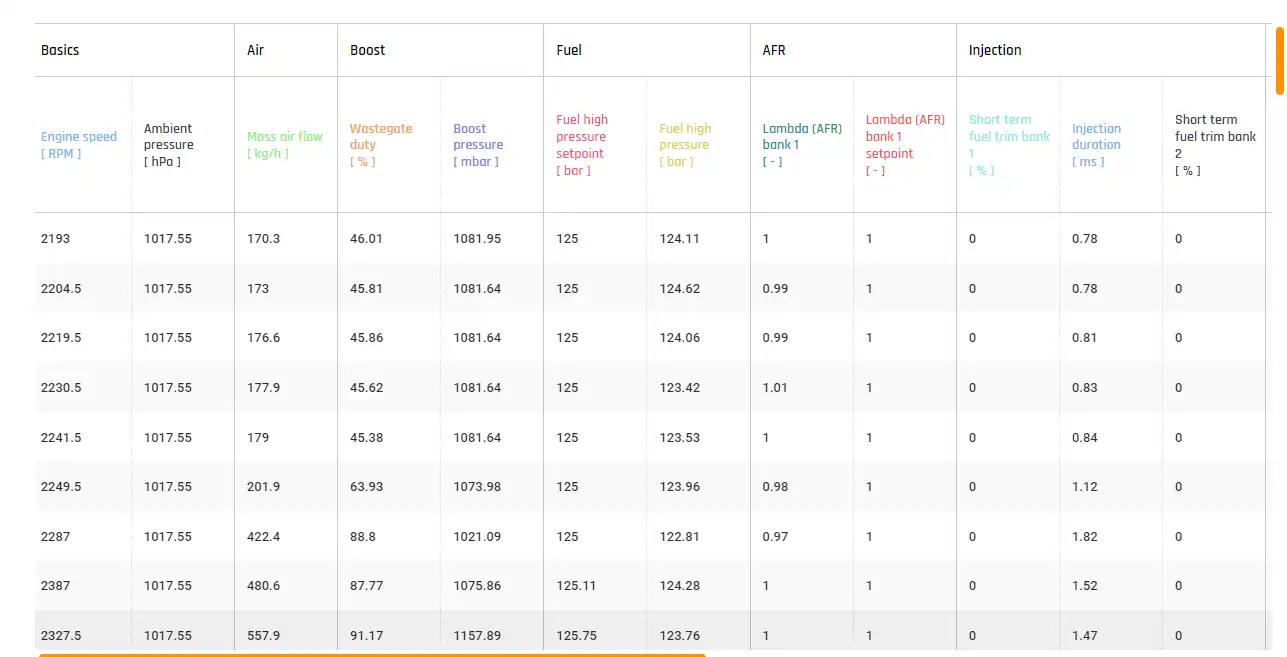What is “VGS”? What is it used for? What is “MPC”?
You may have heard these terms and similar ones. If you are interested in the field of automotive and remapping, you may also know some of these. In this article, we intend to explain these terms in a simple, brief, and concise manner.
In fact, you can consider this article as a "small encyclopedia of remapping". So if you have any questions in this field, please let us know and we will add that term to this article.
OBD:
OBD (On-Board Diagnostic) or in fact OBD port, is a port that is located under the steering wheel or dashboard in most cars, through which you can connect to the car's ECU and access various information. In fact, devices such as diagnostics, programmers and etc. are devices that have an OBD port and can be connected to the ECU through them. In cars that have an OBD port, the process of reading and writing is mostly done through this port.
DKG/ DCT/ DKG Tuning/ DCT Tuning:
DKG (Doppel Kupplungs Getriebe) or DCT (Dual-Clutch Transmission) is a type of gearbox that uses two clutches (one for odd gears and one for even gears) to shift gears smoothly and quickly. Based on the general mechanism of how this gearbox operates, other gearboxes have been developed, one of which is the DSG gearbox (which we will introduce later).
DKG Tuning or DCT Tuning refers to the software update of this type of gearbox.
If you need DKG Tuning, you can upload your file to the CaracalTech File Service and receive the modified file in the shortest time. Also, if you want to take a training course for this type of gearbox, you can visit the TCU Tuning DSG/ ZF/ DCT link.
DSG/ DSG Tuning:
DSG is a model of DCT (Dual-Clutch Transmission) developed and designed by Volkswagen. This gearbox also uses two separate clutches (for odd and even gears) to shift gears. Different types of this gearbox have been used in many cars, including Volkswagen, Audi, Porsche, Seat and etc.
In fact, DSG Tuning refers to the remapping of this type of gearbox. At CaracalTech, we also remap and provide training for various types of these gearboxes (different types of DQ and DL). You can see the remapping training course for these gearboxes at the TCU Tuning link.
VGS/ VGS Tuning:
VGS (7G-Tronic), also known as “Variable Gear Ratio”, is a type of automatic gearbox commonly used in Mercedes-Benz vehicles, known for its excellent performance and efficiency. “VGS Tuning” refers to the remapping of this type of gearbox. This gearbox has great potential for programming, and its remapping is done at CaracalTech.
Stage Tuning:
Car software tuning (remapping) usually has 3 stages. Stage 1 is performed on regular cars (without aftermarket parts), stage 2 is for cars with light aftermarket parts, and stage 3 is the final tuning stage suitable for cars with heavy aftermarket parts.
For a better understanding of the differences between these 3 stages, you can read our article "What is Stage Tuning?".
ECO Tuning:
Eco Tuning is a specific type of remapping that prepares the car for lower and more efficient fuel consumption. In this type of remapping, the aim is to improve the car's performance while minimizing its wear and tear as much as possible, making it ready for a more cost-effective driving experience.
AFR:
Air/Fuel Ratio, or AFR, is the ratio of fuel to air in the combustion and fuel delivery system of a car, meaning for every gram of air, how many grams of fuel we have. For example, the stoichiometric (chemically ideal) AFR is 14.7:1, meaning 1 gram of fuel for 14.7 grams of air. A number higher than this (e.g., 15:1) indicates a lean mixture, and a number lower (e.g., 12.5:1) indicates a rich mixture. For more information, you can read the article "AFR VS Lambda".
Lambda:
Lambda is the result of dividing "Actual AFR" by "Stoichiometric AFR."
Wideband:
A wideband device is a tool that can measure the actual AFR (explained in the previous paragraphs). For more information, you can read the article "What is Wideband Tuning?"
Road ECU Tuning:
Road tuning is one of the methods of car remapping. In fact, for a better understanding, we can compare dyno tuning and road tuning; if in dyno tuning, the ECU adjustment is based on the data of the dynamometer, in road tuning, the remapping is based on driving data on the road. It could be said that one of the tools for this work is a wideband device, which allows you to adjust the car based on the wideband data on the road. Some people argue that the advantage of road tuning is that this type of tuning is more realistic compared to dyno tuning, as it takes into account factors such as friction (such as air temperature, wind speed, road irregularities, etc.) and more realistic data.
ECU Programming on The Bench/ Bench Mode/ Boot mode Tuning:
You have probably heard these terms a lot. The latest method of ECU tuning and reading the ECU is reading it through the OBD port. This means that with a programmer (which has an OBD cable) and through the car's port, you can read the ECU file.
However, in some cars and ECUs, you cannot read the ECU using this method, and you need to physically remove the ECU and separate it from the car. Then, using the methods and protocols of your programmer, you can read the ECU from its pins. This method is called “Bench Mode” or “Bench Tuning”.

In another method, known as “Boot Mode”, after removing the ECU from the car, you have to open the ECU and read it through the main board of the ECU.



Please note that each of these methods has its own risks and must be done correctly and with the correct protocols in order to avoid damaging or deleting the ECU program.
In addition to reading the ECU through the OBD port, there are other methods as well. However, these methods are not choices, but rather, you may be forced to choose them.
ACU/ ACM:
The ACU, also known as the Airbag Control Unit (ACU) or Airbag Control Module (ACM), is a module for controlling the airbags in a car. The reason for creating such modules (apart from the ECU) is to outsource some of the functions of the ECU in order to reduce the size of the codes and programs inside the ECU.

ICU/ ICM:
The Immo Control Unit or Immo Control Module, as the name suggests, is a module for the immobilizer of the car. The existence of such a module, as mentioned earlier, is for reducing the size of the ECU's data and controlling it optimally.

ACM:
The AdBlue Control Module is a module for controlling the AdBlue system in diesel vehicles. For example, this module is seen on many vehicles that have the Bosch MD1 ECU. The question that arises is that in vehicles with ACM and if you intend to delete the AdBlue system through software, in some cases, you have to remove it from the ACM, in some cases from the ECU, and in some cases from both. We perform this AdBlue off service at CaracalTech, and for this, you can upload your vehicle file to our Tuning File Service and receive the tuned file in the shortest time possible.

What is ACM?
The Aftertreatment Control Module (ACM) is an electronic control unit responsible for managing the components of an engine’s exhaust aftertreatment system. It plays a critical role in ensuring that diesel engines, meet stringent emission standards set by regulatory authorities. While its function overlaps somewhat with the engine control unit (ECU), the ACM is often implemented as a standalone module, especially in commercial vehicles, heavy-duty trucks and buses where emission control systems are more complex.
The primary role of the ACM is to control the processes that occur after combustion, in the exhaust stream, to reduce harmful emissions such as nitrogen oxides (NOₓ), particulate matter (PM), hydrocarbons (HC), and carbon monoxide (CO). These emissions are treated using various components, including the Diesel Oxidation Catalyst (DOC), Diesel Particulate Filter (DPF), Selective Catalytic Reduction (SCR) system, and sometimes Lean NOₓ Traps. The ACM manages these components by controlling the flow of exhaust gases, monitoring sensor feedback and regulating dosing systems such as diesel exhaust fluid (DEF) injection.
The ACM receives information from a network of sensors placed along the exhaust system. These sensors typically include NOₓ sensors located upstream and downstream of the SCR catalyst, pressure sensors across the DPF to estimate soot loading, and exhaust gas temperature sensors to monitor thermal conditions necessary for effective catalyst operation. Based on the data from these sensors, the ACM makes real-time decisions on how to maintain optimal exhaust treatment. This may involve increasing exhaust temperature through post-injection of fuel, adjusting engine load, or activating an onboard burner if equipped.
Modern ACMs are fully integrated with On-Board Diagnostics (OBD) systems and are required to detect and report any emission control malfunctions that could result in regulatory non-compliance. In many jurisdictions, vehicles with persistent aftertreatment faults may enter a limited power mode or even be prevented from restarting until the issue is resolved.
What is MCM?
The MCM, or Motor Control Module, is a central electronic control unit that manages and controls the operation of a diesel engine. It is responsible for overseeing all aspects of engine performance, including fuel injection, air management (such as turbocharger control), engine timing, emissions control coordination, and protection strategies. In essence, the MCM acts as the engine’s "brain," making real-time decisions based on sensor data to optimize power, fuel efficiency, emissions compliance, and engine longevity.
The MCM is found in various modern diesel engine systems, especially in commercial and heavy-duty applications, such as trucks and buses. A good example of where it’s used extensively is in the Detroit Diesel engine family (DD13, DD15, DD16), where it works in conjunction with another key module: the ACM, or Aftertreatment Control Module.
MCM physically mounted close to or on the engine; it deals with everything that happens within the engine itself (air intake, combustion, fuel injection).
EMS/ ECM:
EMS stands for “Electronic Management System”, and ECM stands for “Electronic Control Module”. In fact, depending on the car model, they perform all or part of the functions that the ECU does.
ECU Solution:
In the terminology of car tuning and remapping, the term "solution" actually refers to the software deletion of some car systems such as AdBlue, EGR, and DPF. For more information, you can read articles on DPF Delete & EGR Delete.
Mappack/ Damos:
In explaining this term, it should be noted that a mappack file is created for an original ECU file.
A mappack file is a file in which tables, axes, units, offsets, and required factors are specified.
A damos file is a binary file containing information and guidance about the data and tables of the ECU. In fact, a damos file can serve as a guide for better understanding and more comprehensive use of the ECU and the methods used in it.
If you want more information about mappack and damos, you can read the "Damos Files" article.
Data log:
A data logger is a device that can record a variety of technical information such as pressure, intake air mass, boost, fuel, AFR, injection, and etc. For data logging, there are separate devices available, and you can also use programmers such as AutoTuner, which also perform data logging.


EPROM:
If we want to put it in the simplest and most concise way possible, EPROM is Erasable Programable Read-Only Memory. In fact, this memory has the capability of being read and erased, but it cannot be changed.
MPC:
“MPC” or “. MPC” actually refers to the term Microprocessor. Files with this format are files that have read the microprocessor of the ECU. To perform fine tune, it is sufficient to read the microprocessor (MPC file) of the ECU.
ORI or Original file:
The original file is defined for each ECU or car before any other reprogramming or modifying.
BIN or “.BIN File”:
The term "bin files" refers to binary files; files in which data is stored in binary form. In fact, this file format is one of the most common formats for storing and transferring ECU files.
HEX:
Hex or hexadecimal is a number writing system based on 16. It includes numbers from 0 to 9, and for numbers 10 to 15, it uses the letters A to F, respectively. Hex has many applications in various fields, and the way it is displayed in some systems is different.
📍If you have any question, feel free to contact us at: support@caracaltech.com
